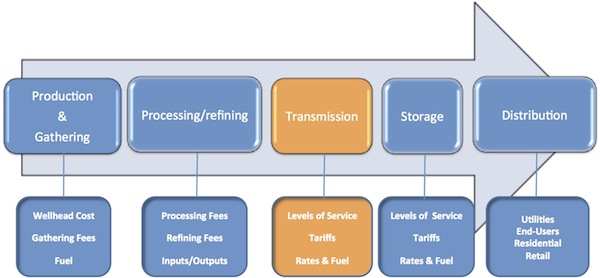Once the raw natural gas stream has been processed, it is now “commercial grade,” or “pipeline quality,” natural gas. The outlet, or residue, side of the processing plant delivers the gas to the transmission pipelines. The primary function of transmission pipelines is to move the gas from the producing basins to the market areas.
The following mini-lecture will illustrate the function and operation of the transmission pipeline systems.
Key Learning Points for the Mini-Lecture: Transmission Pipelines
While watching the Mini-Lecture, keep in mind the following key points and questions:
- Natural gas transmission pipelines connect supply areas throughout the country with major market areas.
- These are large-diameter steel pipes.
- As opposed to gathering lines, these run at very high pressures.
- The US has a huge pipeline "grid" running from coast-to-coast with several pipelnes connected to one another.
- Various sources of supply and consumption connect to these pipelines.
- Large compressors are used to move the gas along the pipelines.
